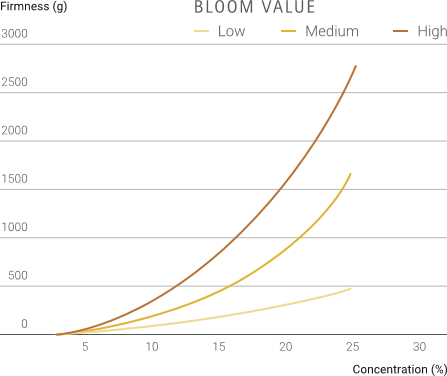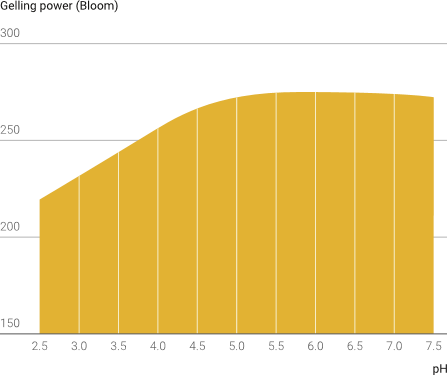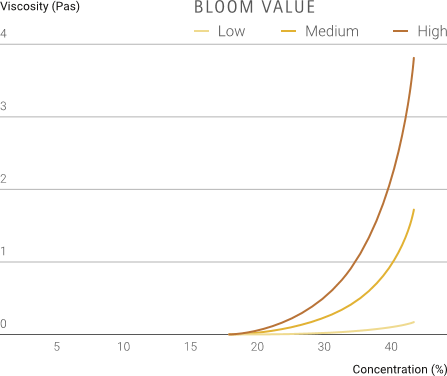Viscoelastic properties
According to the method defined by the American scientist, Oscar T. Bloom, the gelling properties of gelatin are described in Bloom grams (the firmness of a 6.66% gel after 17 hours of storage at 10 °C). They are dependent on the gelling time and temperature, the melting temperature and the viscosity.
Bloom value and concentration
The primary property of gelatin is its ability to form thermo-reversible gels. This is both technologically and economically important, and is therefore an important quality aspect of gelatin. The Bloom values of commercial gelatin are between 60 and 300 Bloom. The firmness depends on the Bloom value and on the concentration of the gelatin being used.

Advantages high-Bloom gelatins include
- higher melting and setting points
- quicker setting times • lower quantities required
- lighter colors
- neutral odor and taste
Handling factors can also have a strong impact, including the concentration of the gelatin solution, the gelling time and temperature, the thermal pretreatment and duration, and the pH value and salt content of the solution. To achieve the perfect results and meet the required product standards, it is crucial to select the right type of gelatin and consider the influencing factors.

Change in gelling power as a function of pH and type of gelatin

Setting and melting points.
High-Bloom gelatins have high setting temperatures. To determine the viscoelastic behavior of gelatin gels, an oscillating rheometer is used. Here, in addition to the elasticity or storage modulus G', the viscosity or loss modulus G'' is determined. The cooling curve of a gelatin solution shows that the viscous properties dominate when the loss modulus G'' is greater than the storage modulus G'.
In contrast, elastic properties dominate when the storage modulus is greater than the loss modulus; this corresponds to a gel state. The transition area, wherein the viscous part is the same as the elastic part, is known as the sol-gel transformation point. The cooling and heating curves of gelatin solutions are not identical; there is distinct hysteresis. This means that the melting process is at a higher energy level whereby the melting temperature is generally approx. 5 °C above the setting temperature of the corresponding gelatin.

Viscosity
The flow behavior of different gelatins is important as it influences the production process. The viscosity of a gelatin solution is dependent on concentration, temperature and Bloom value. The raw materials and the manufacturing process have an indirect influence on viscosity.

